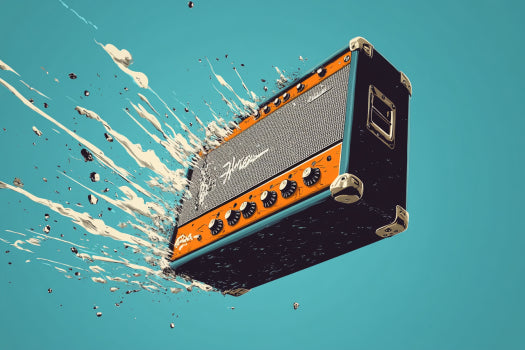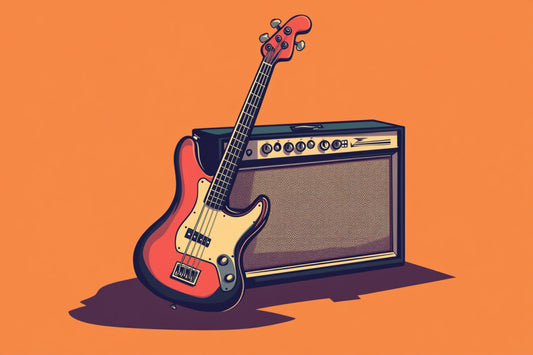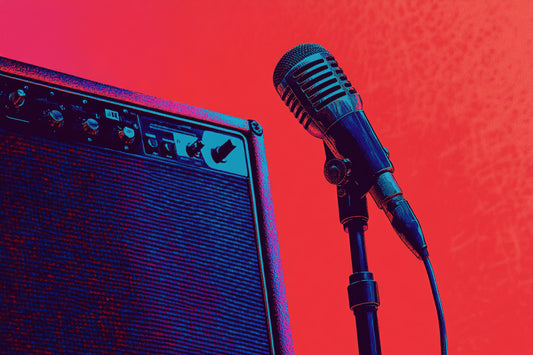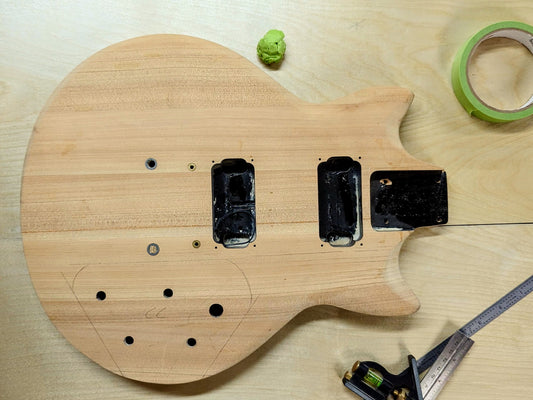
When you see a band setting up on stage, you might notice the sound crew carefully placing microphones in front of the guitar and bass amps. If you’re new to playing live or recording, you might wonder: why do musicians mic their amps? Isn’t the amp loud enough on its own? Whether you’re a beginner or a seasoned player, understanding why musicians mic their amps can significantly improve your sound in various settings. Let’s dive into the essentials of miking amps, bust some myths, and offer practical tips to get the best results.
What Does It Mean to Mic an Amp?
Miking an amp is exactly what it sounds like: placing a microphone in front of an amplifier’s speaker to capture and amplify the sound it produces. This sound is then sent through a PA system for live performances or directly into a recording interface. The typical setup involves a dynamic microphone positioned close to the amp’s speaker grill, often angled to capture the full range of sound frequencies the amp produces based on the functionality of the microphone itself.
This process isn’t limited to guitar and bass amps. Nearly any instrument can be played through an amplifier, keyboards or even vocals in certain situations, and they all could benefit from miking the amp. But why go to the trouble of setting up a mic when the amp is already... ya know... amplifying the sound?
Why Musicians Mic Their Amps
1. Better Sound Control
In essence, this is what it's all about.
Miking an amp allows sound engineers to have greater control over the sound that reaches the audience or the recording. In a live setting, truthfully, the acoustics of any given venue can get really messy, making it difficult to find a balanced mix. Theoretically, the players on stage could simply adjust their own volumes accordingly, but practically speaking it makes much more sense to have a single person with control on a soundboard adjusting things on the fly (and from way out in the audience). Without miking, your amp might overpower other instruments or get lost in the mix.
2. Volume Management
Amplifiers, especially when cranked up, can be incredibly loud. In small venues, this might result in ear-splitting volumes that are hard to manage. By miking an amp, musicians can keep their stage volume lower, allowing the sound engineer to control the overall volume through the PA system. This is crucial in maintaining a comfortable listening experience for the audience.
3. Tone Preservation
Every amp has its own unique tone, which is a critical part of a musician’s sound, and that tone often varies at different volume levels. Miking allows musicians to capture this tone accurately, preserving the nuances that make their sound distinct. As a guitar or bass player, the amp itself can make up a huge portion of your overall tone. A direct line-in connection might not capture the warmth, grit, or character of an amp as effectively as a well-placed microphone.
Common Myths About Miking Amps
There are a few misconceptions about miking amps that are worth addressing:
- "Only big venues need mics."
While it’s true that larger venues benefit from miking amps to fill the space, even small gigs can see improvements in sound quality and control with miking. It’s not about the size of the venue but the clarity and balance of the overall sound.
- "Direct input is always better."
Direct input (DI) boxes can be useful, especially for bass, but they bypass the amp’s speaker, which means you lose the specific tone your amp produces. Miking captures the true essence of your sound, including how your amp interacts with your instrument.
- "Mic placement doesn’t matter."
In reality, mic placement is critical. Moving the microphone even slightly can drastically change the sound, emphasizing different frequencies and altering the tone.
Practical Tips for Miking Your Amp
1. Microphone Placement
The most common placement is directly in front of the amp’s speaker cone, but slight adjustments can yield very different tonal results. Placing the mic closer to the center of the cone will capture a brighter, more focused sound, while positioning it toward the edge will result in a warmer, mellower tone. Note that this position is based on the individual microphone's pickup pattern. Different mics capture sound from different directions, and that has to be taken into account.
In the end, you just have to try stuff out. Experimenting with distance and angles can help you find the sweet spot that best suits both your equipment and your style.
2. Using an Amp Stand
An amp stand tilts the amp back, allowing the sound to project more effectively toward your audience and helping to simplify mic placement. This can also reduce unwanted vibrations from the floor and help you hear yourself better on stage without cranking up so loud that you muddy the mix.
3. Distance and Angles
The closer the mic is to the amp, the more direct and focused the sound will be. Pulling the mic back a few inches can capture more room ambience, adding depth to your sound, but possibly adding excess noise too. Angling the mic slightly off-axis can help reduce harshness and add a more rounded tone. As stated above: just play around with it.






